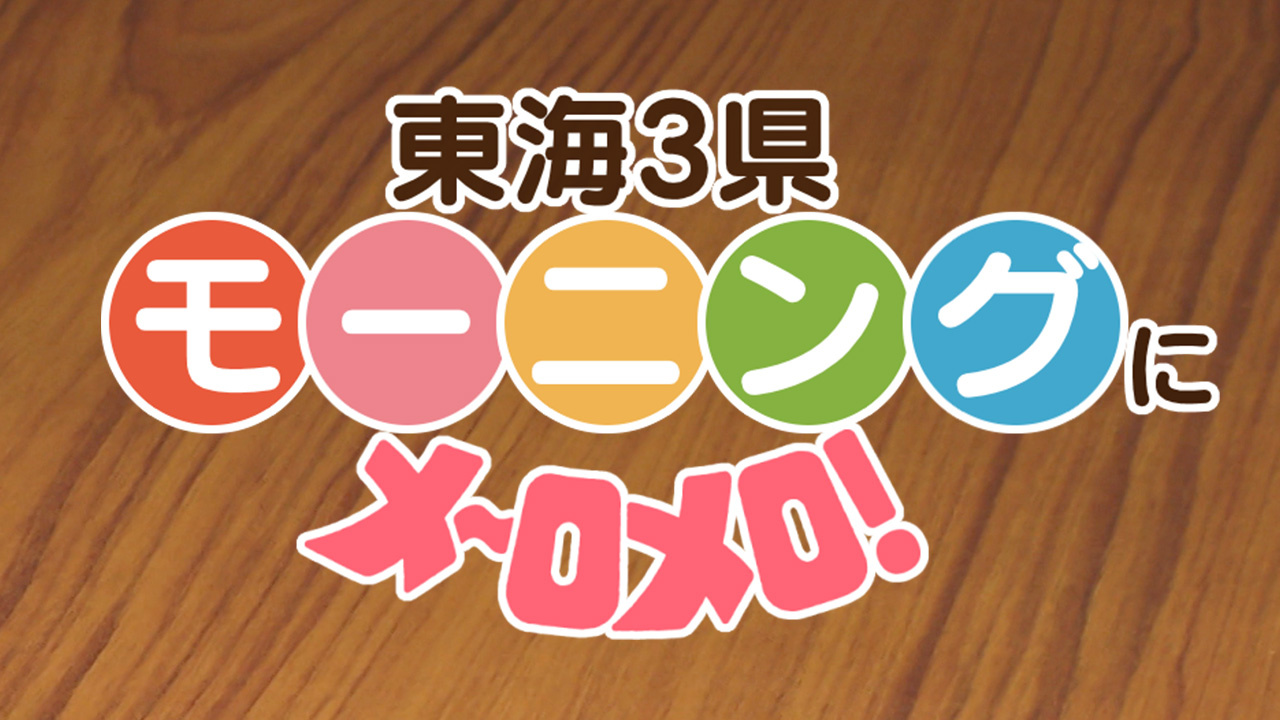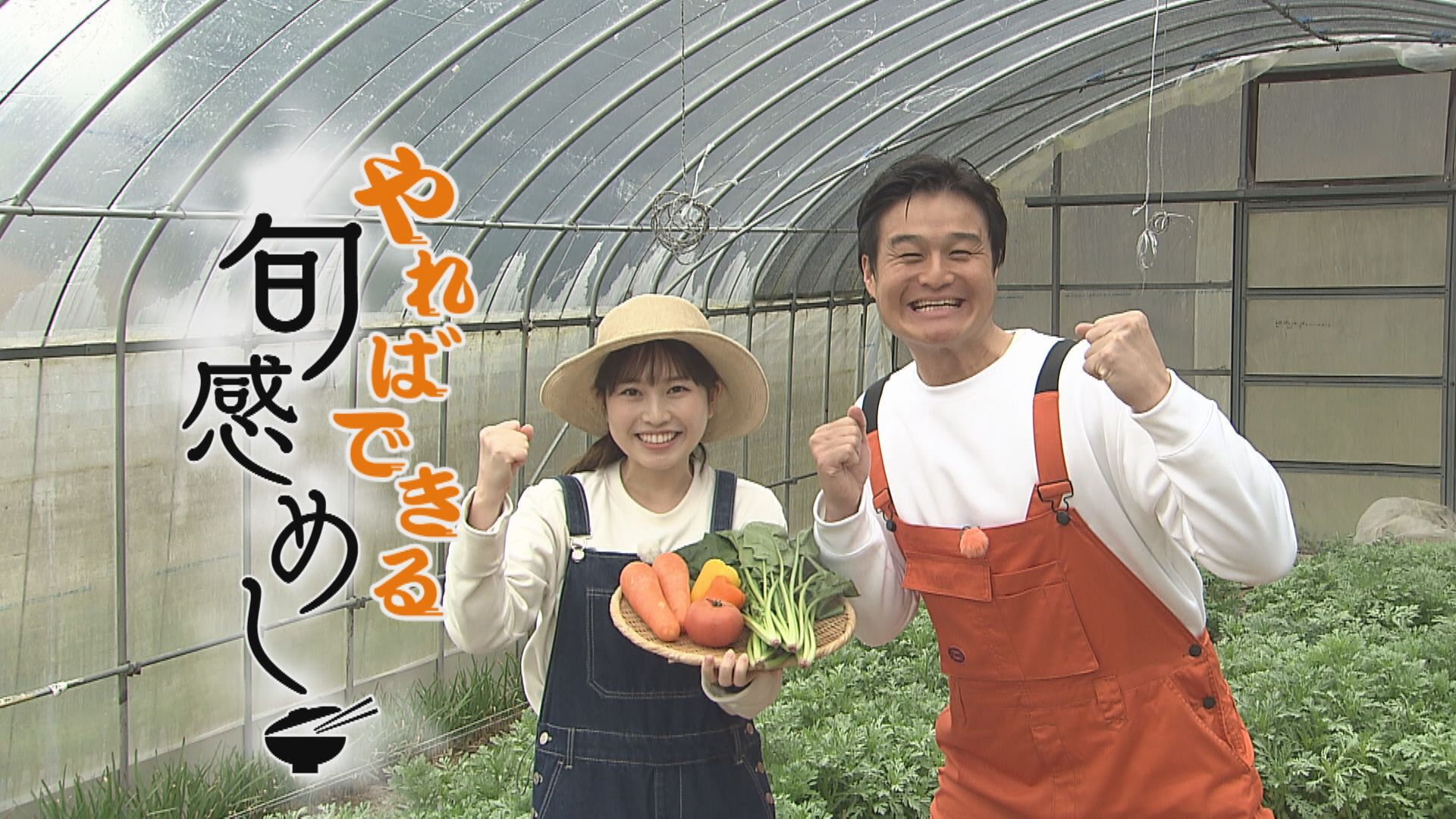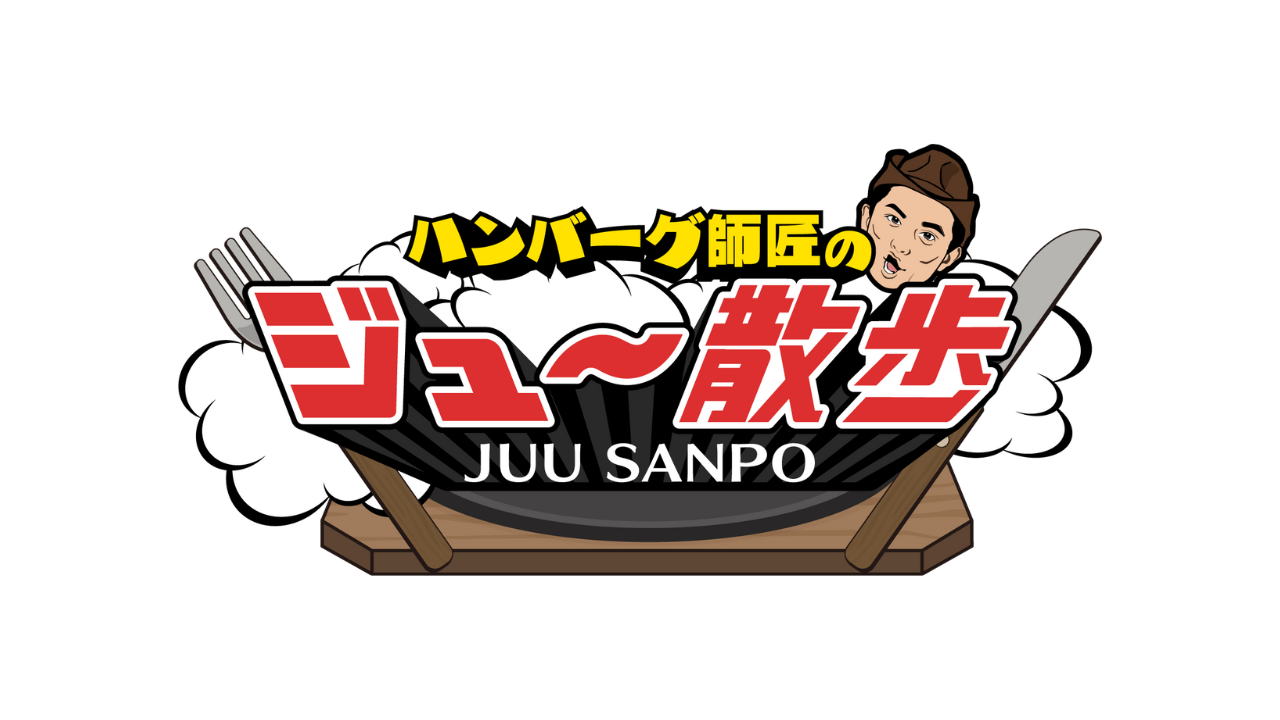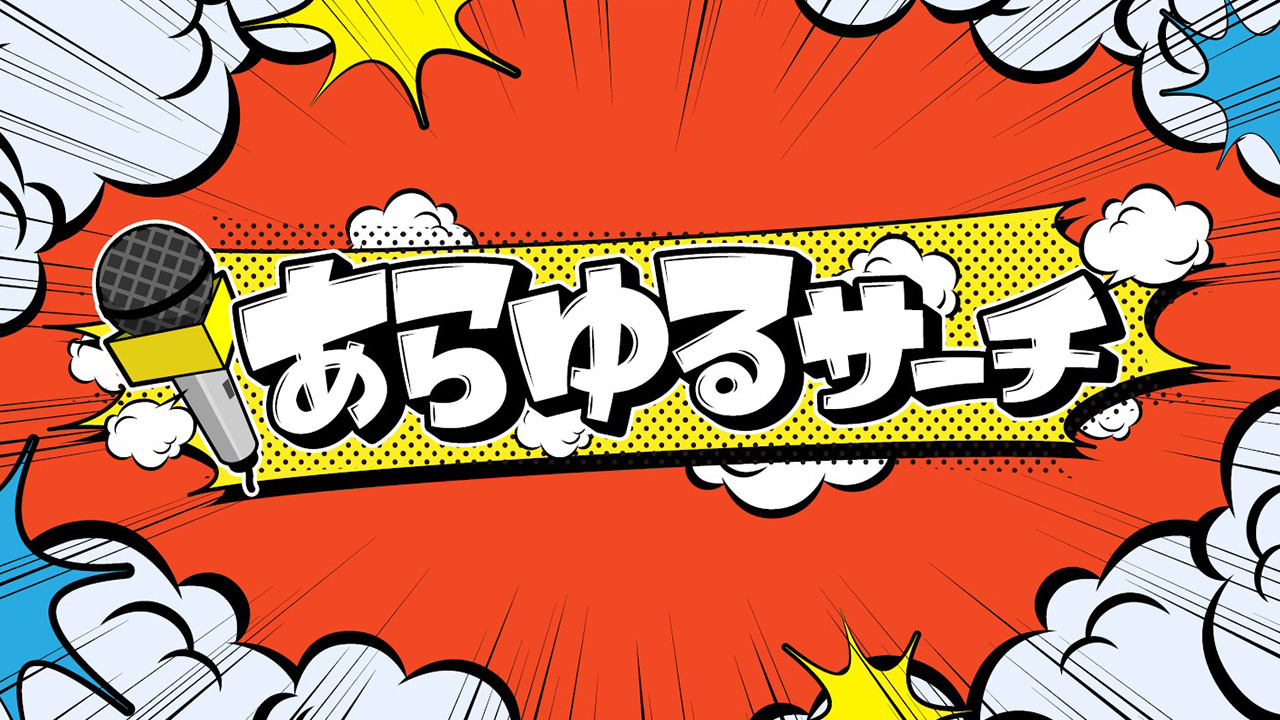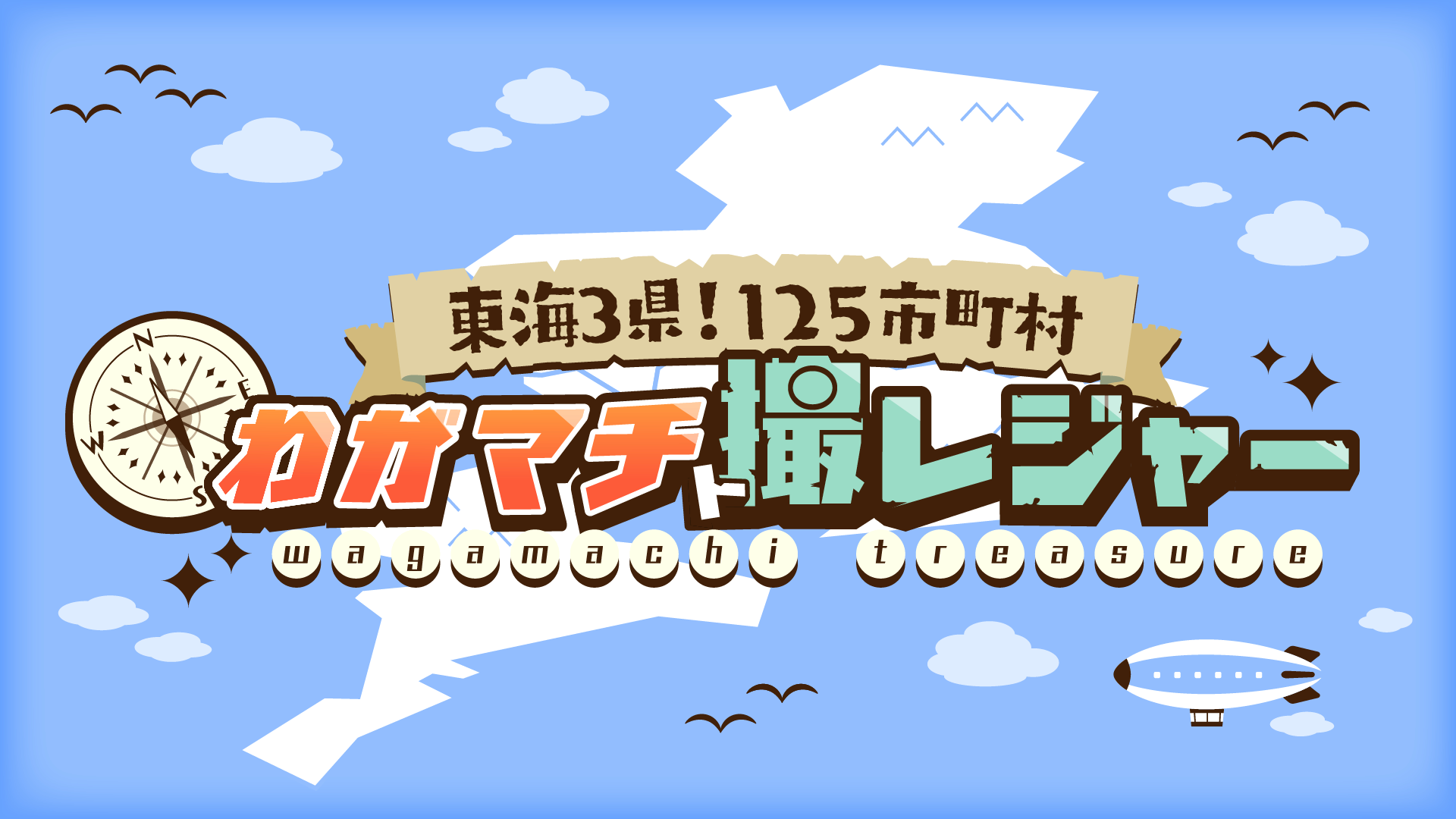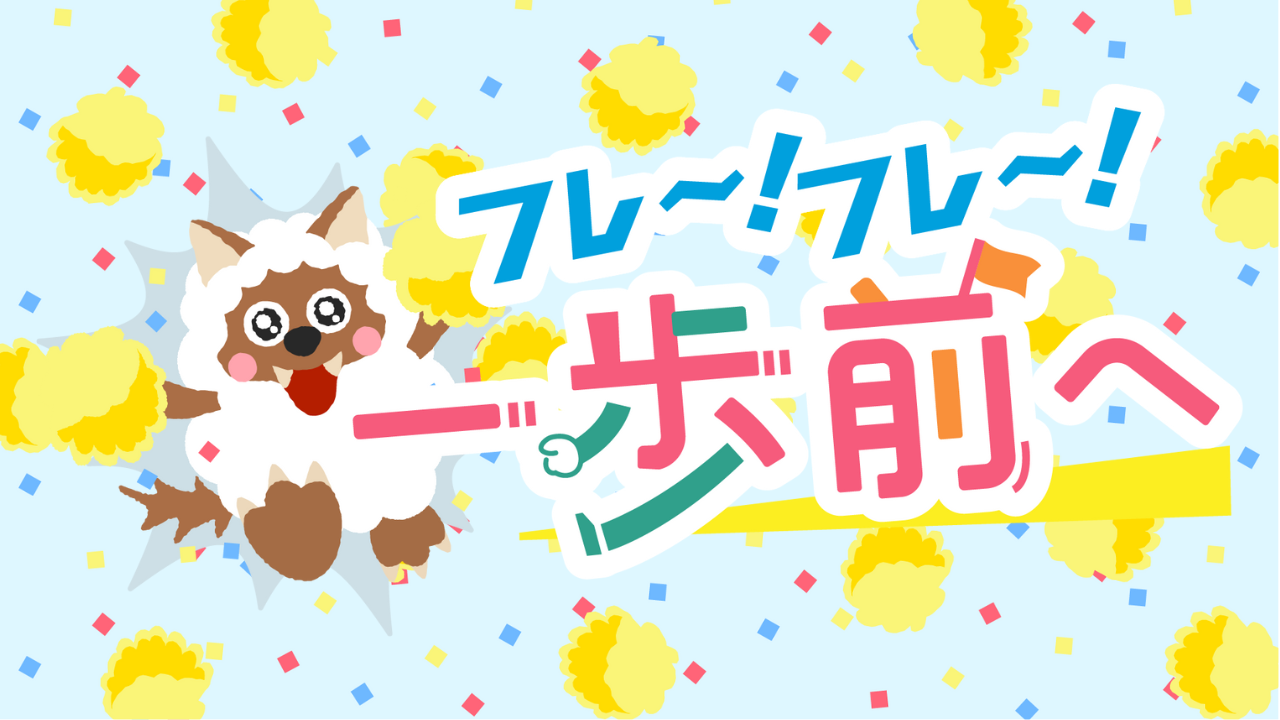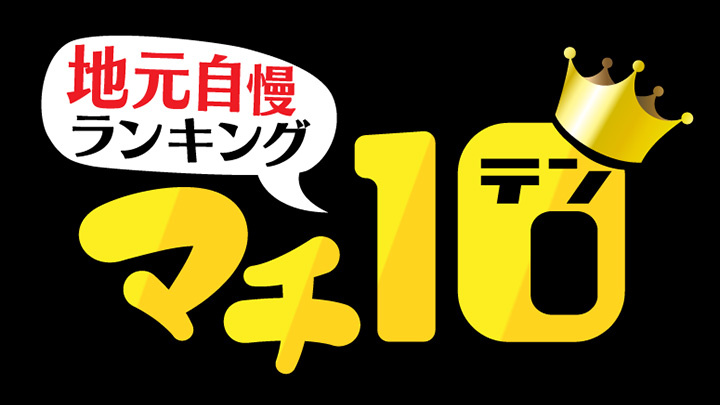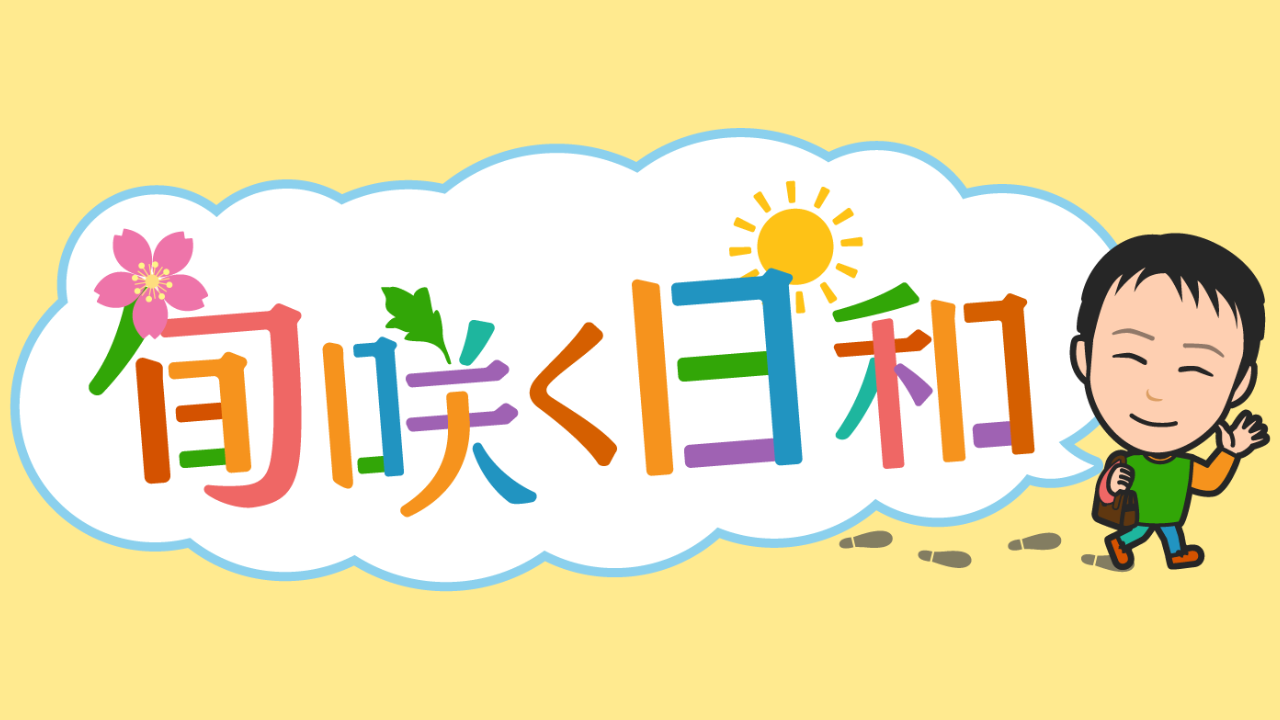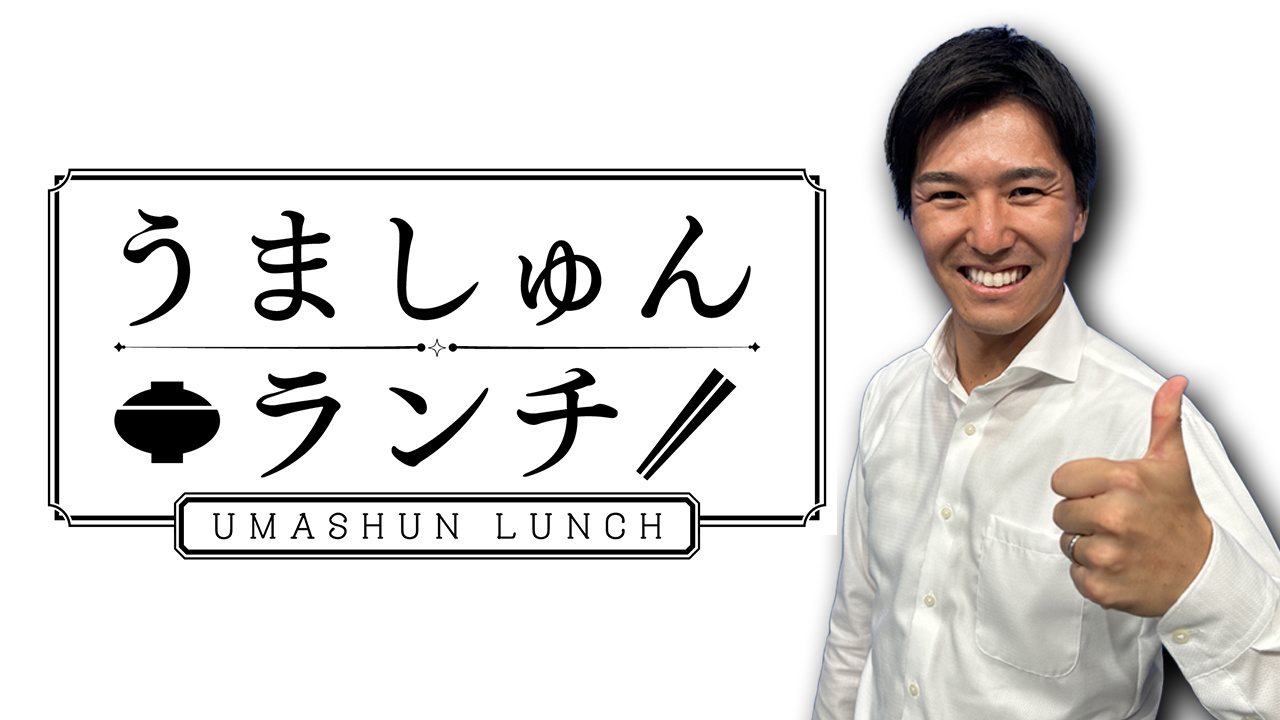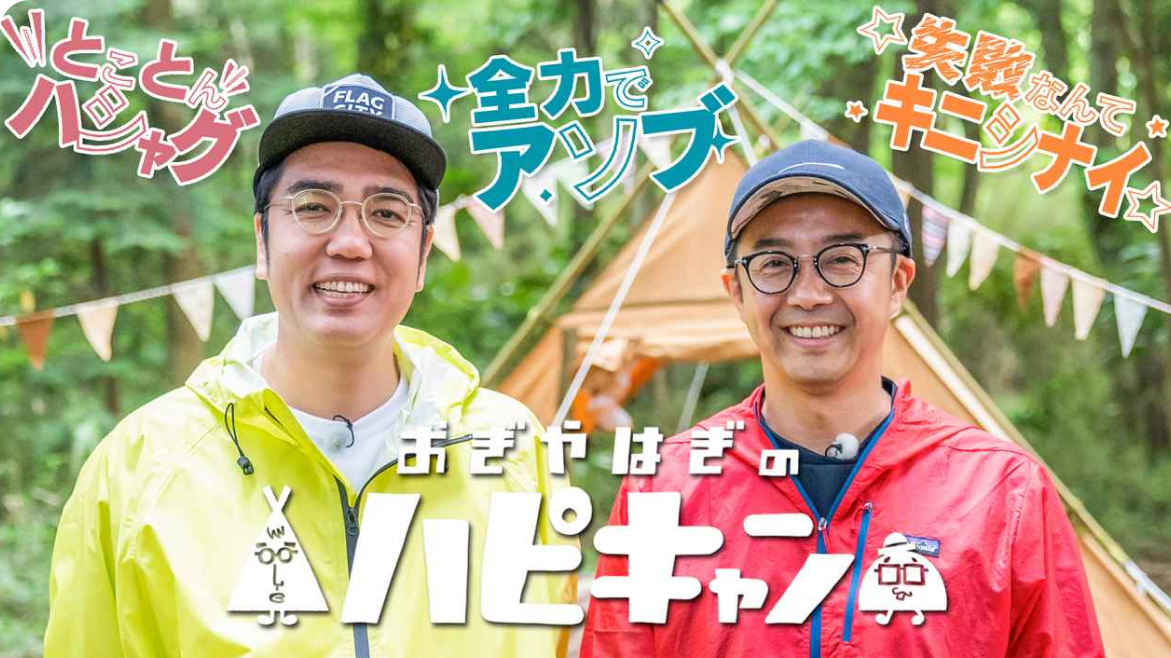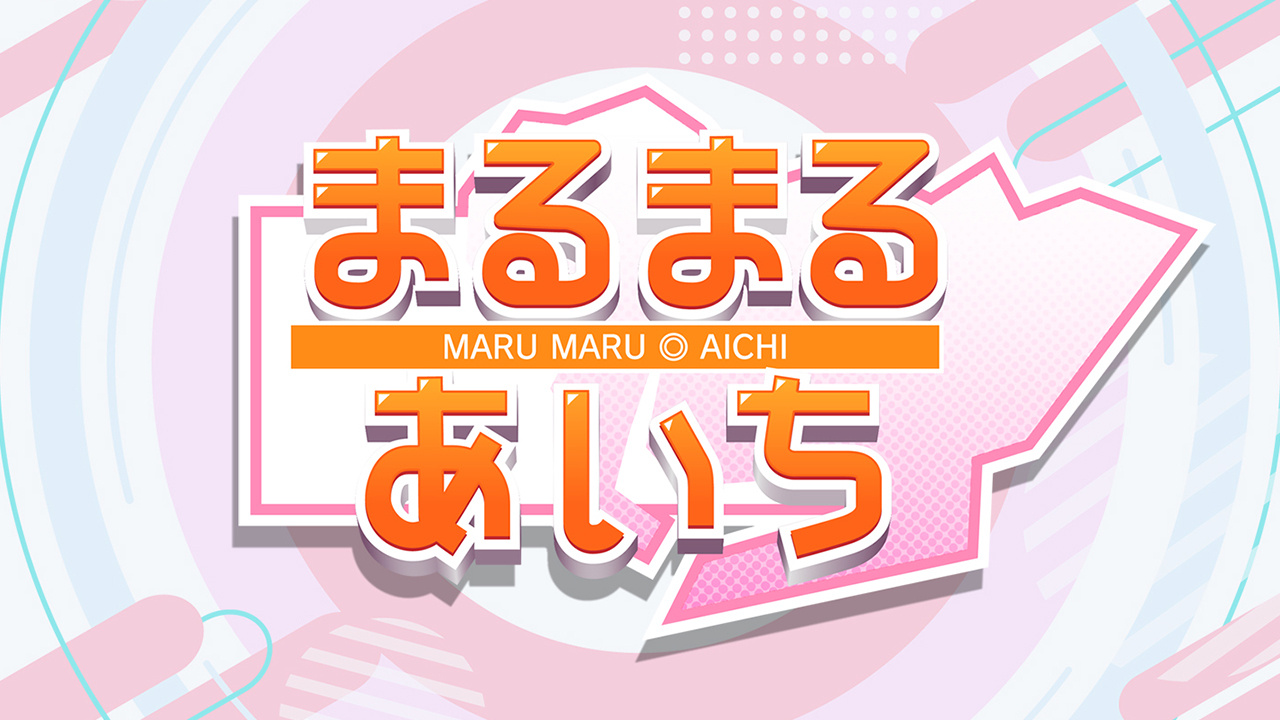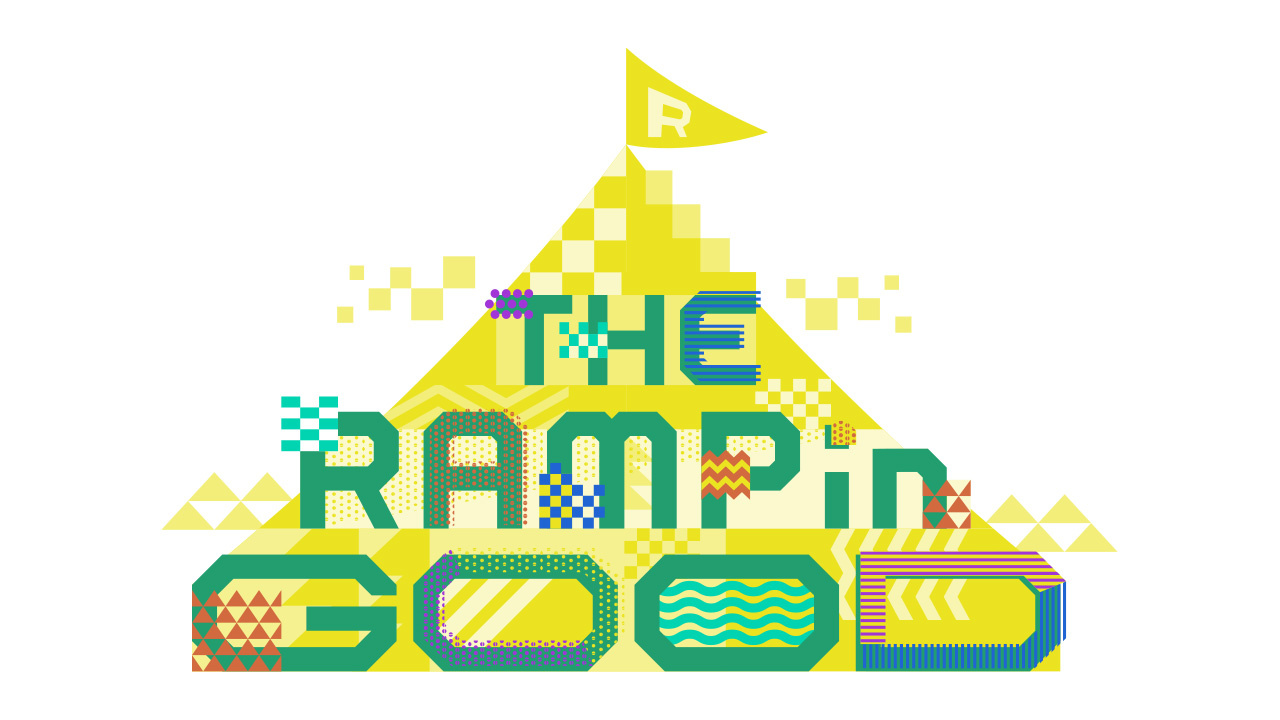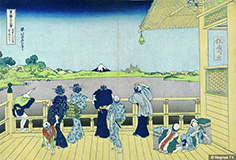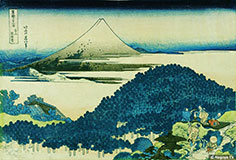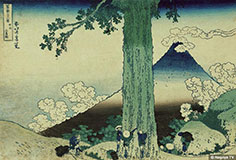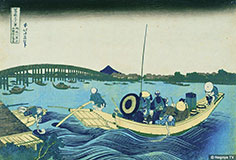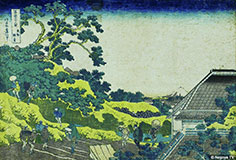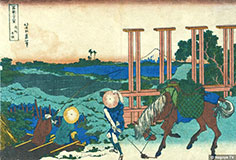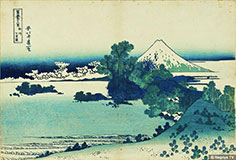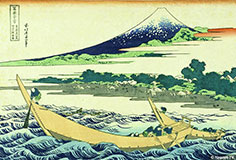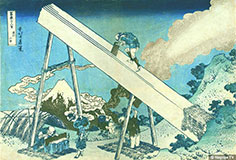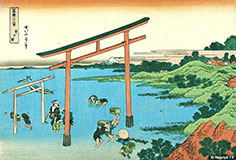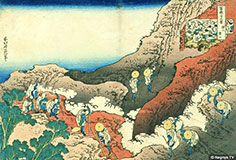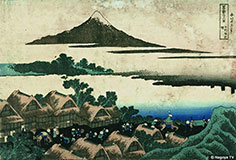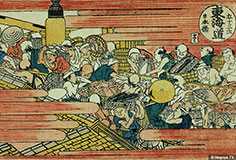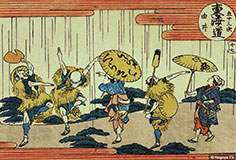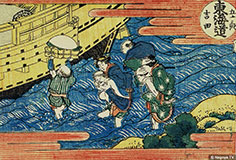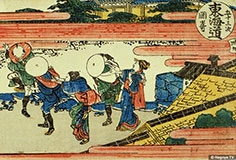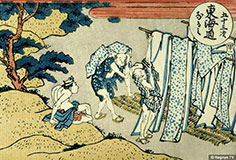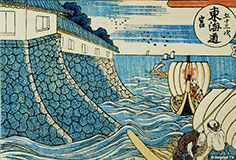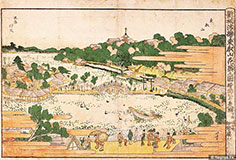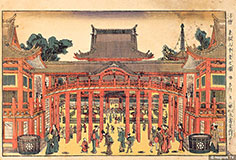葛飾北斎 展示場
Room of Hokusai Katsushika
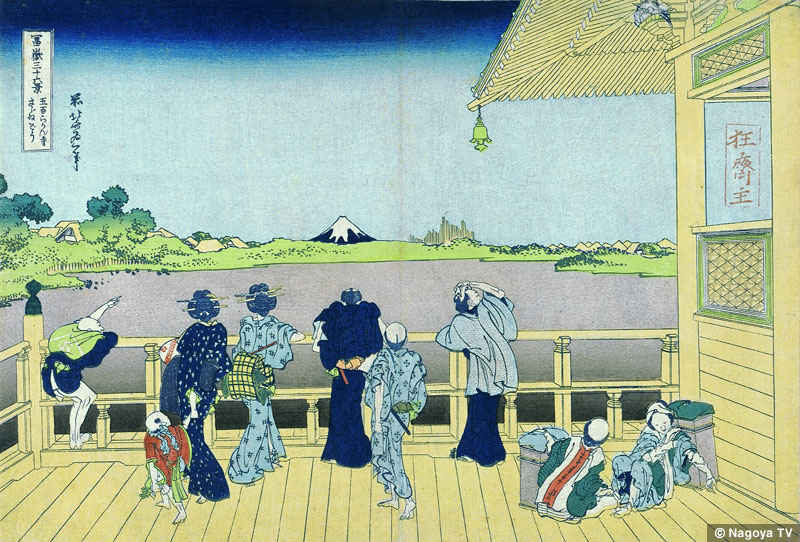
1.冨嶽三十六景 五百らかん寺さざゐどう
Gohyakurakan-ji temple, from the series: "Thirty-six views of Mt. Fuji"
本所の羅漢寺、三階建ての高楼三匝堂 (さざいどう) からの遠望。人物、建物の線など、すべてが中央の富士に収斂する。幾何学的構成が心地よい。
A distant view from the tall three-story sazaidou at Rakan-ji Temple in Honjo. All the lines, such as those of people and buildings, converge in the middle where Mt.Fuji is. The geometric formation is very pleasant.
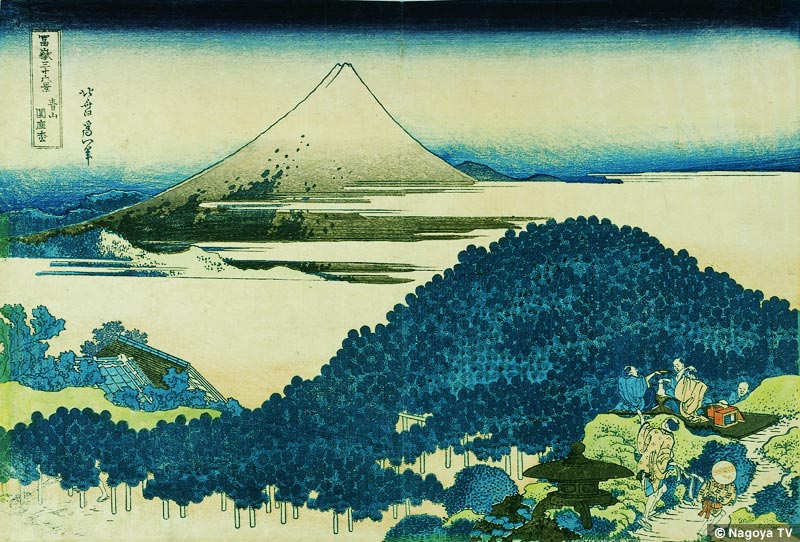
2.冨嶽三十六景 五青山円坐松
Trees in a circle, from the series: "Thirty-six views of Mt. Fuji"
青山の禅刹竜岩寺からの富士の眺め。すっきりとした稜線を見せる富士と、 こんもりとまろやかな笠松の相似がおもしろい。
A view of Mt. Fuji from the Zen temple, Ryugan-ji, in Aoyama. The resemblance between the thick round pine trees and the simple ridgeline of Mt. Fuji is fascinating.
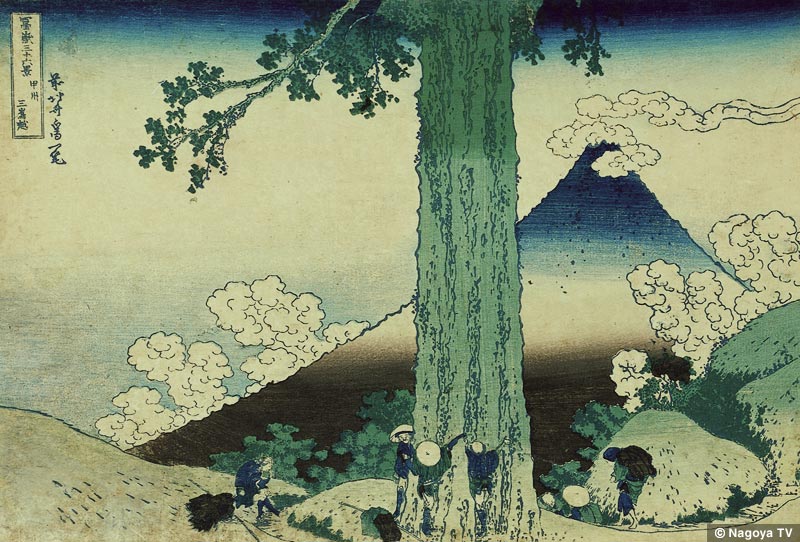
3.冨嶽三十六景 甲州三島越
Mishima pass in Kai Province, from the series: "Thirty-six views of Mt. Fuji"
甲府から三島へ抜ける峠での一景。巨木に出会って旅人は無邪気になってしまう。視線を遮るようにモチーフをおく構図は浮世絵ならではのもの。
A view from the mountain pass from Kofu to Mishima. The travelers become children again upon coming across the gigantic tree. Placing the motif so it as if the line of vision is intercepted, is non but a style of Ukiyo-e.
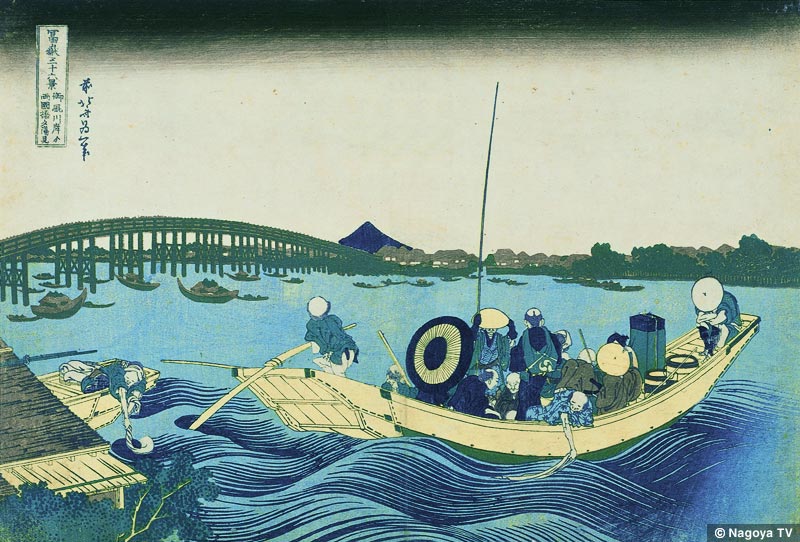
4.冨嶽三十六景 御厨川岸より両国橋夕陽見
Sunset from Onmayagashi shore, from the series: "Thirty-six views of Mt. Fuji"
隅田川東岸、御厩河岸(おんまやがし) から西を見る。夕暮れ時の富士のシルエットに注目。橋と舟の二つの円弧など、幾何学的な要素が強い構成。
Looking Out into the West from the Onmayagashi shore of the Sumida River east coast. Pay attention to the silhouette of Mt. Fuji at sunset. There are many elements, such as the two arcs of the bridge and boat, that give it a very strong geometrical composition.
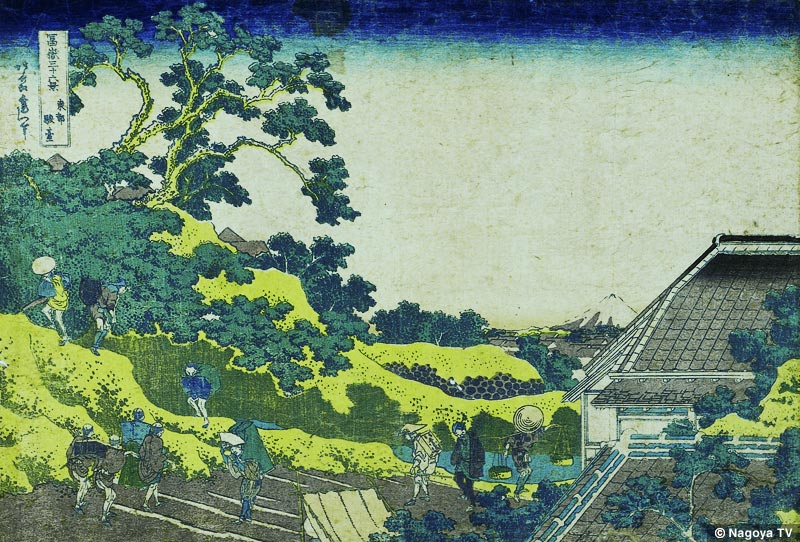
5.冨嶽三十六景 東都駿台
Sundai in Edo, from the series: "Thirty-six views of Mt. Fuji"
神田駿河台、お茶の水一帯からの富士の眺めである。土手や樹木などの形は、見る者の視線を富士に導くように工夫されている。
From Kanda Surugadai, a view of Mt. Fuji from a stretch in Ochanomizu. Shapes of the river bank and trees have been designed so as to guide the viewers sight towards Mt. Fuji.
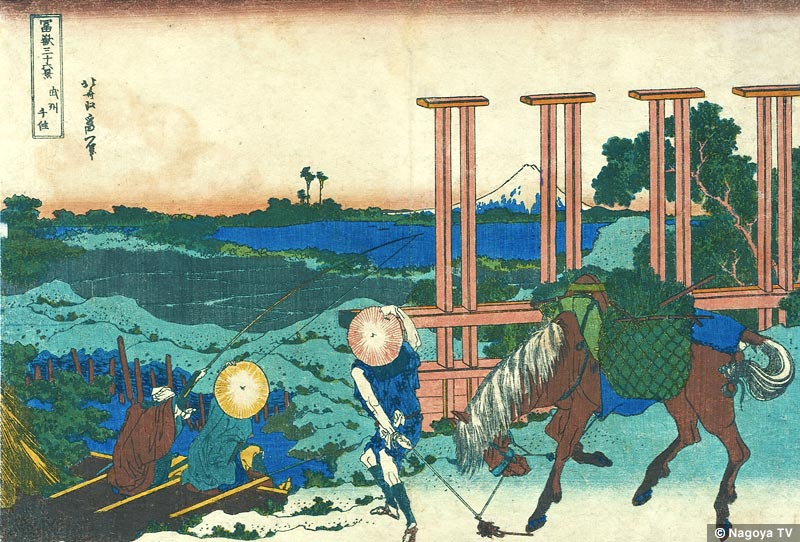
6.冨嶽三十六景 武州千住
Senju in Musashi Province, from the series: "Thirty-six views of Mt. Fuji"
隅田川上流、千住大橋の脇の掘割りの景。水門の柱の直線にさまざまな曲線が合奏する。馬の背、手綱など、富士の相似形にも注目したい。
From upstream Sumidagawa River, a view from a trench on the side of the Senju Oohashi Bridge. Many curved lines come together in harmony in the straight lines of the flood gate pillars. Also pay attention to the shapes that resemble Mt. Fuji, such as the horse's back and the rein.
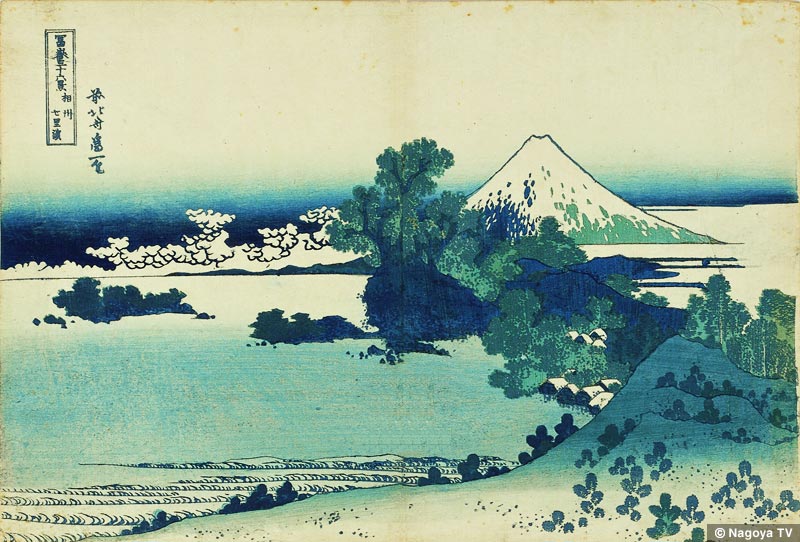
7.冨嶽三十六景 相州七里浜
Soshu Shichi-ri-hama in Sagami Province, from the series: "Thirty-six views of Mt. Fuji"
鎌倉の丘からの富士の眺め。富嶽三十六景は、最初は藍色の濃淡だけで刷り出されたもの(藍摺)である。
A view of Mt. Fuji from a hill in Kamakura. The series, "Thirty Six Views of Mt. Fuji, "were first printed only in shades of dark blue (known as Aizuri).
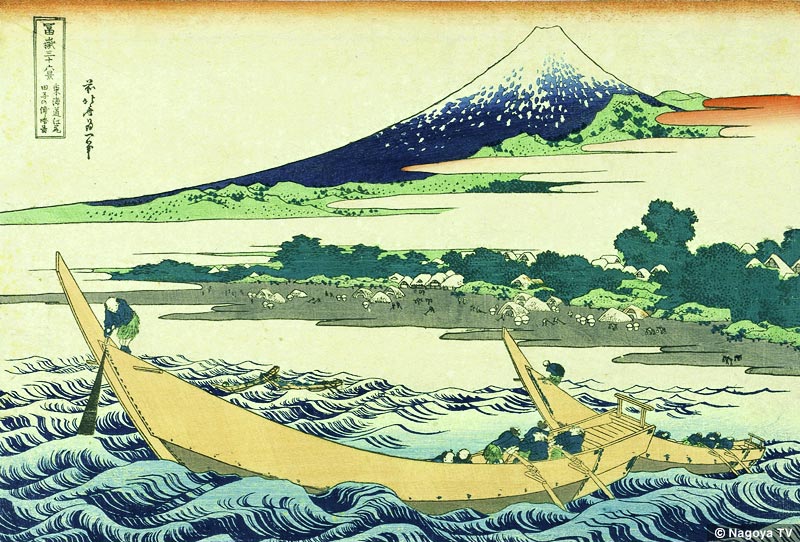
8.冨嶽三十六景 東海道江尻田子の浦略圖
A sketch of Ejiri Tagonoura on the Tokaido Road, from the series: "Thirty-six views of Mt. Fuji"
万葉以来の歌枕として名高い田子の浦。うねりの小刻みな線、舟の明快な曲線、たなびく雲、すっくと立つ富士の稜線など、各種の線が合奏する。
Tagonoura was renowned for poetry since "Manyoshu." Various lines are playing in harmony here, such as the short quick lines of the sea swells, the lucid curved lines of the boat, the trail of clouds, and the ridge lines of Mt. Fuji rising high.
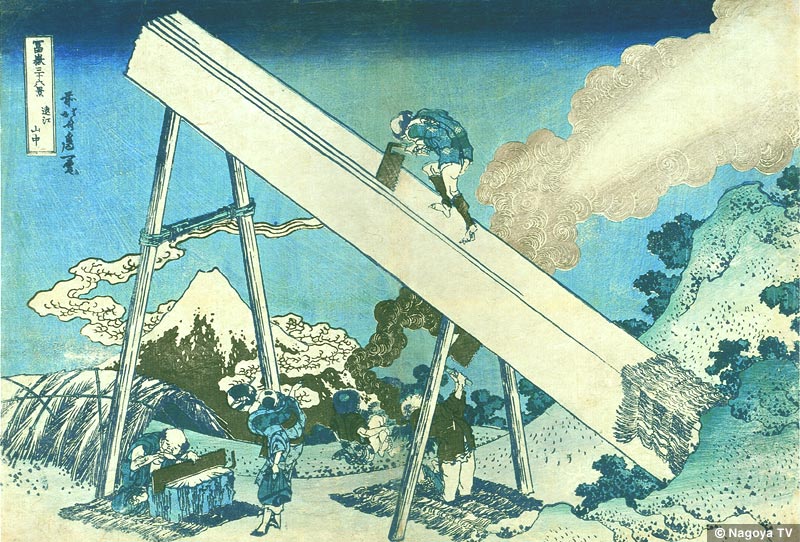
9.冨嶽三十六景 遠江山中
Among the mountains in Totoumi Province, from the series: "Thirty-six views of Mt. Fuji"
奇趣を好んだ北斎は、富士にさまざまに仕掛ける。太胆に斜めに描かれる材木の下からのぞく富士。いかにも画狂人北斎ならではの太胆な構成である。
Hokusai, who enjoyed odd interests, portrayed Mt. Fuji in various ways. Peeping out at Mt. Fuji from beneath the boldly drawn slanted timber. The bold composition is truly the work by the eccentric artist, Hokusai.
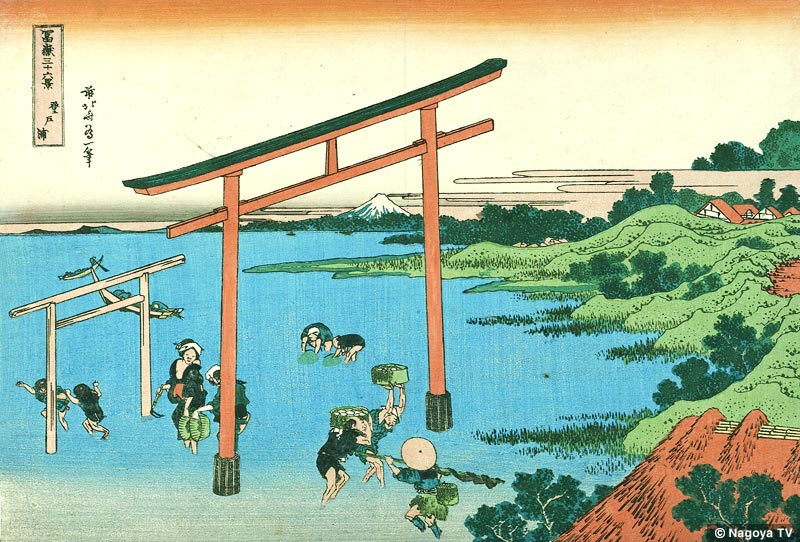
10.冨嶽三十六景 登戸浦
The Noboritoura, from the series: "Thirty-six views of Mı. Fuji"
千葉の海岸からの富士の眺めである。潮干狩りや漁業にいそしむ人々の姿が描かれる。一種凍り付いたような画面も北斎画の特色である
A view of Mt. Fuji from a coast in Chiba. The clam diggers and fisherman working diligently are being portrayed. This print, as if the scene has been frozen in time, is a distinguishing characteristic of the Hokusai print.
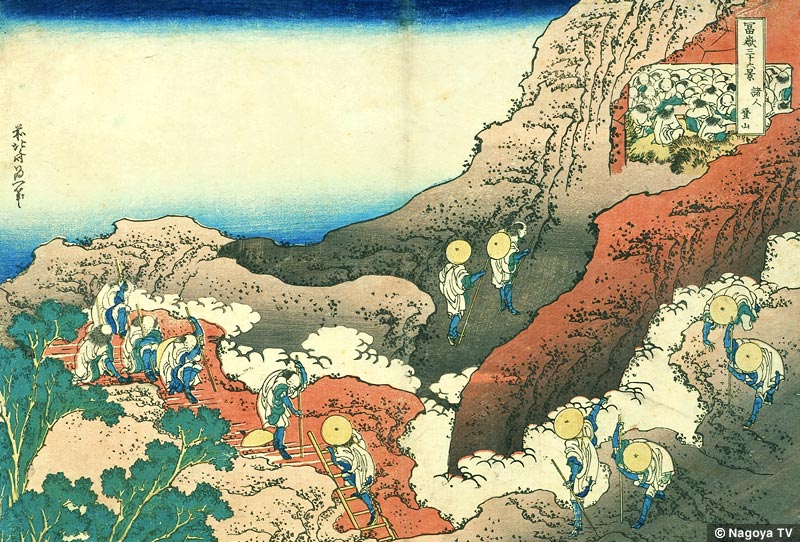
11.冨嶽三十六景 諸人登山
Numerous Climbers, from the series: "Thirty-six views of Mt. Fuji"
「富嶽三十六景」全体のエピローグとも目すべき、富士山頂の図である。人々の表情に喜びや達成感よりも疲労が目につくのは、北斎の心境か。
This view of the crest of Mt. Fuji can be considered to be the epilogue of the series, "Thirty Six View of Mt. Fuji." Could Hokusai's state of mind be the reason that the expressions on the people's faces are portrayed with fatigue, rather than happiness and accomplishment?
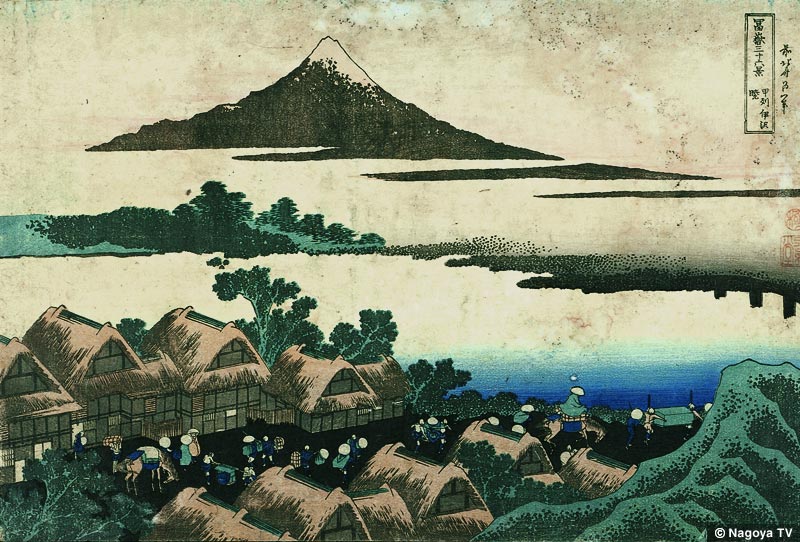
12.冨嶽三十六景 甲州伊沢暁
Dawn aut Koshu Isawa in Kai Province, from the series: "Thirty-six views of Mt. Fuji"
甲府から甲州街道を江戸へ向かう最初の宿場が伊沢(石和)。早立ちの人馬でにぎわう暁の情景が、暗く沈んだ色調のうちに実感を込めて描き出される。
Isawa is the first station to come to when going from Kofu to Edo on the Koshukaido road. The bustling scene at dawn of people and their horses getting an early start is drawn with feeling, with a dark and dusky tone.
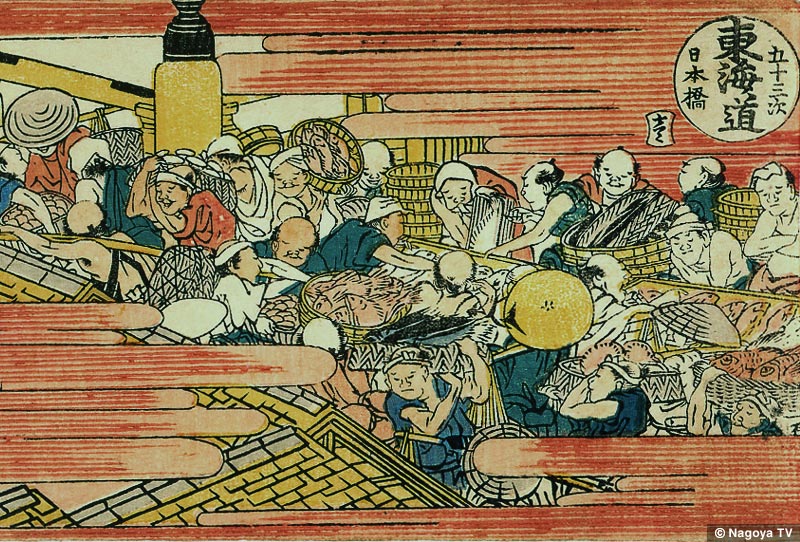
13.東海道五十三次 日本橋
Nihonbashi, from the series: "Fifty three stations on the Tokaido road"
北斎は実は東海道五十三次の揃物を早い時期から制作していた。これはハガキ程度の小さな画面のシリーズ。日本橋の雑踏の雰囲気がよく伝わってくる。
Hokusai actually began producing the collection of the "Fifty Three Station on the Tokaido Road" at an early period. These were a series of small postcard-size prints. The atmosphere of the bustling activity of Nihonbashi is well portrayed.
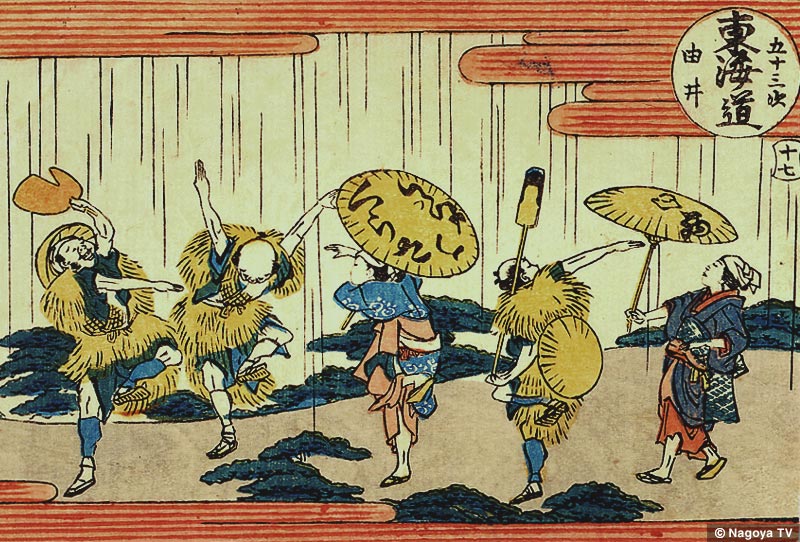
14.東海道五十三次 由井
Yui, from the series: "Fify three stations on the Tokaidon Road"
雨乞の効あって雨が降ってきたのか、 人々が小躍りして喜ぶ。北斎の人物デッサンが飛び抜けて優れていることは、 ポーズの正確さがよく示している。
It seems like the people's prayers for rain were answered, as they dance with joy. What is so outstanding about Hokusai's drawings is that the accuracy of the poses are well indicated.
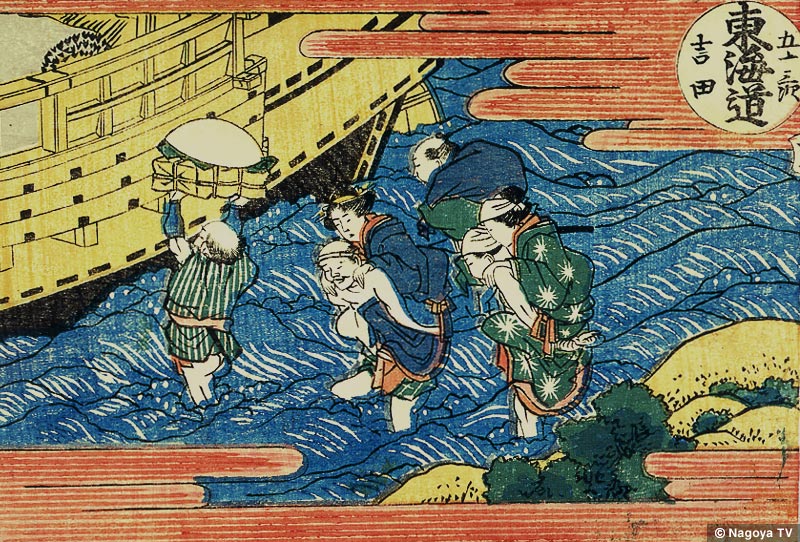
15.東海道五十三次 吉田
Yoshida, from the series: "Fifty three stations on the Tokaido Road"
吉田は現在の豊橋市中心部。そこを流れる大きな豊川には吉田大橋がかかっていたのだが、ここでは歩行渡し(かちわたし)のようすが描かれている。
Yoshida is in the center of present day Toyohashi. There was once the Yoshida Oohashi Bridge over the large Toyogawa River that runs through the area, but here we see people crossing the river on the backs of others.
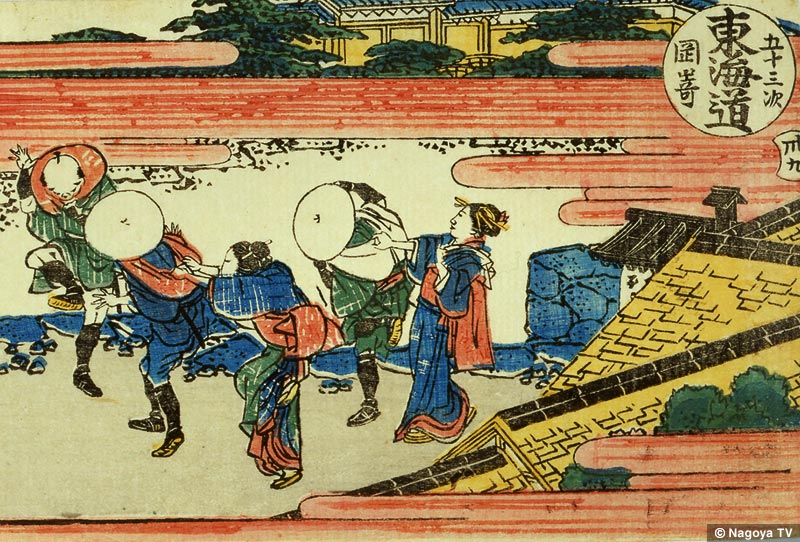
16.東海道五十三次 岡崎
Okazaki, from the series: "Fifty three stations on the Tokaido Road"
旅籠の客引きのようすである。本シリーズは、青、黄、濃淡二色の赤とい う単純な色使いと、これまた単純な図柄との取り合わせが小気味よい。
It appears to be a solicitor trying to the traveler to stay at their inn. The simple colors that are used in this series, blue, yellow, and two shades of red, with the combination of the simple design makes this print very piquant.
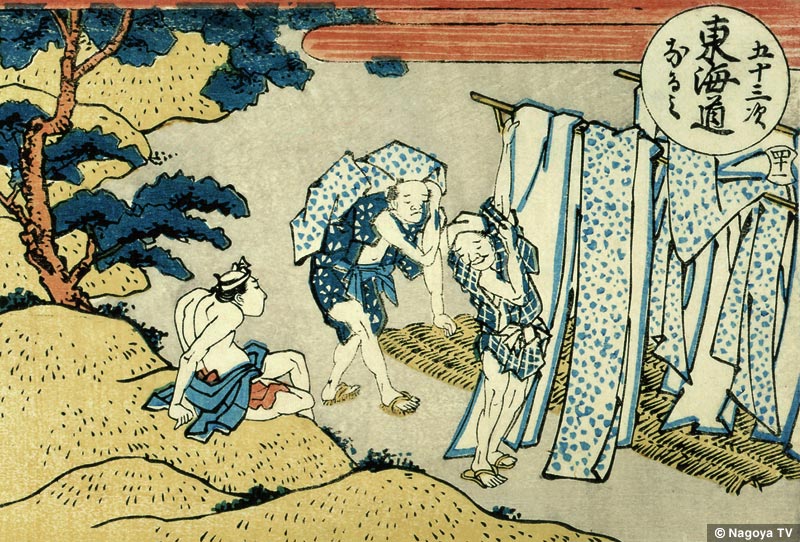
17.東海道五十三次 鳴海
Narumi, from the series: "Fifty three stations on the Tokaido Road"
街道絵では各宿場の名所や特産品がしばしばとりあげられる。鳴海は、今日では有松絞りの名で知られている、絞り染めである。
Sights of interest and specialty goods from the area are often incorporated into road drawings. For Narumi, it is tie-dying that is known today as Arimatsu Shibori.
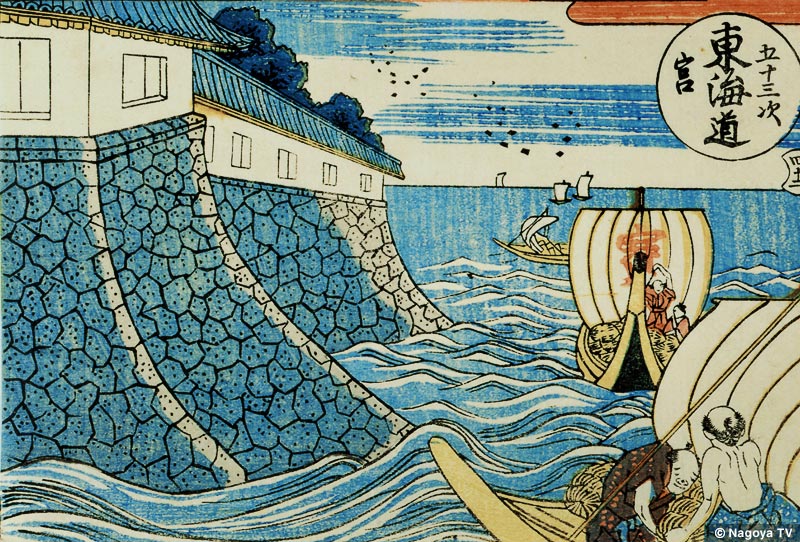
18.東海道五十三次 宮
Miya, from the series; "Fifty three stations on the Tokaido Road"
東海道は宮(名古屋の熱田)から桑名までは木曽三川をわたることがきないので、東海道のうち唯一の海路とな る。七里の渡しと呼ばれていた。
On the Tokaido Road, the Kisosansen Rivers can not be crossed to get from Miya (Atsuta in Nagoya) to Kuwana, so it is the only water route on the Tokaido Road. It was called the Shichiri ( seven ri - which is about 28 kilometers) crossing.
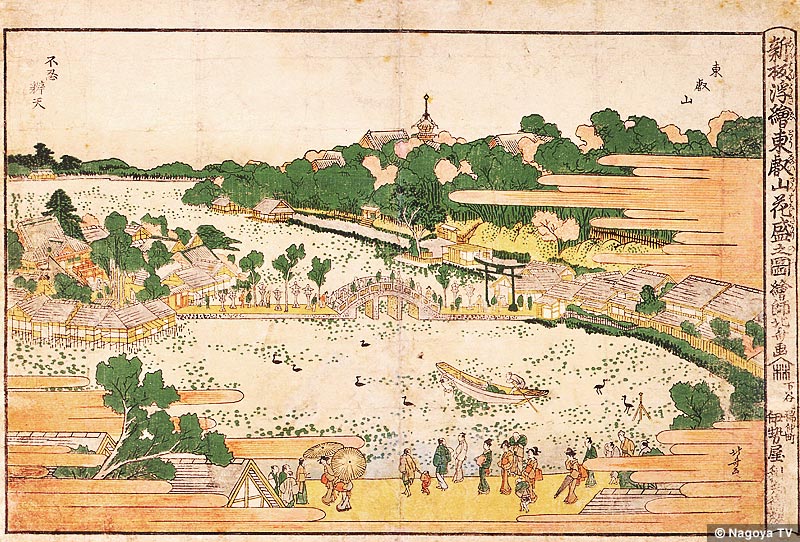
19.新板浮絵東叡山花盛之圖
New uki-e edition of the Toeizan in full bloom
上野の不忍池越しに、花盛りの東叡山寛永寺を眺める。遠近法に習熟してきた北斎は、同じく「浮絵」と題しても、自然 な遠近表現が使えるようなる。
A view of Toeizan Kan-ei-ji Temple in full bloom from across the Shinobazu Pond in Ueno. Hokusai, who was skilled in the Method of perspective, was able to make a natural perspective representation, even though it was called "Uki-e" (floating picture).
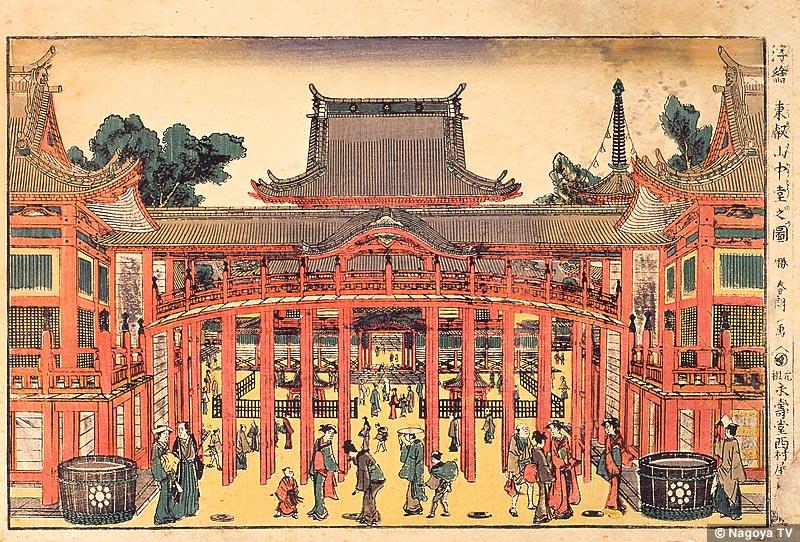
20.浮絵東叡山中堂之圖
Uki-e of the Toeizan central hall
上野の東叡山寛永寺を正面から堂々とした姿に描く。建物の直線を利用して、遠近感を強調した浮絵(うきえ)の手法を用いている。
A bold depicture of the front of Toeizan Kanei-ji Temple in Ueno. A Uki-e method is used in which the straight lines of the building are utilized in order to emphasize perspective.




